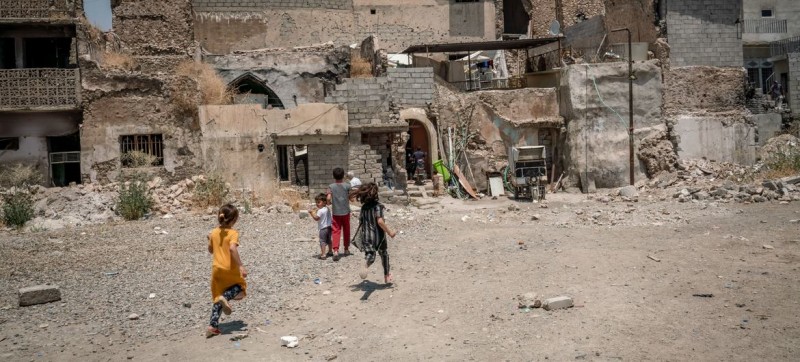Children play in a neighbourhood ravaged by conflict in Iraq. “A child being hurt is a child too many”, said the UN Children’s Fund (UNICEF) Representative in Iraq on Friday, following a rocket attack against a school in Baghdad the previous night, which left a child and woman injured. In a statement, Sheema SenGupta stressed that “children must be protected from attacks at all times” and that schools and homes must always be places of safety. Wishing the injured a speedy recovery, the representative said that “nothing justifies attacks on civilians” and called on all parties to fulfill their obligation, under international law, to protect children. “All children in Iraq deserve to live their lives without the constant threat of violence”, she said. Ms. SenGupta also believes schools should be protected because “they are a place of sanctuary for children to learn and fulfill their potential.”
Elaf school in #Baghdad was hit by a rocket today.
While the extent of the damage is being ascertained, attacks on students, teachers, schools and universities are unacceptable.#EducationUnderAttack @UNICEFiraq
— Sheema SenGupta (@ShSenGupta) January 13, 2022
She reminded that, according to the Safe Schools Declaration, endorsed by Iraq in 2015, these attacks expose students and staff to harm, deny large numbers of children their right to education and, therefore, “deprive communities of the foundations on which to build their future.”
Humanitarian picture
According to UNICEF, the humanitarian situation in the country is largely a legacy of the violent civil conflict with the Islamic State of Iraq and Syria (ISIS) between 2014 and 2017, when the militant group’s forces were defeated amid the ruins of Mosul.
In its latest update, in December of last year, the agency said that 2.5 million people, including 1.1 million children, continue to need humanitarian assistance.
Approximately 960,000 people, including 422,400 children, are in acute humanitarian need.
As of July of last year, there were 1.2 million internally displaced people (IDPs) and 4.9 million returnees living in the country.
Of these, an estimated 680,000 IDPs and returnee children, face obstacles accessing education – due to factors such as a lack of of civil documentation, or poor access to the Internet and remote learning devices.
Assistance this year
In its plan for 2022, the agency is requesting $52.2 million, 21 per cent less than the year before, to meet the needs of vulnerable children and families.
In line with the 2022 Humanitarian Needs Overview, the overall number of people and children in need, has decreased compared to 2021.
About 660,000 children need protection services, and 920,000 women and children have needs related to gender-based violence. More than 1.6 million people need support for Water, Sanitation and Hygiene (WASH) services.
In addition, Iraq is anticipated to face severe water scarcity this year, affecting an estimated 15 per cent of the children in need, about 119,000.

Displaced children in a classroom in Baghdad, Iraq.



